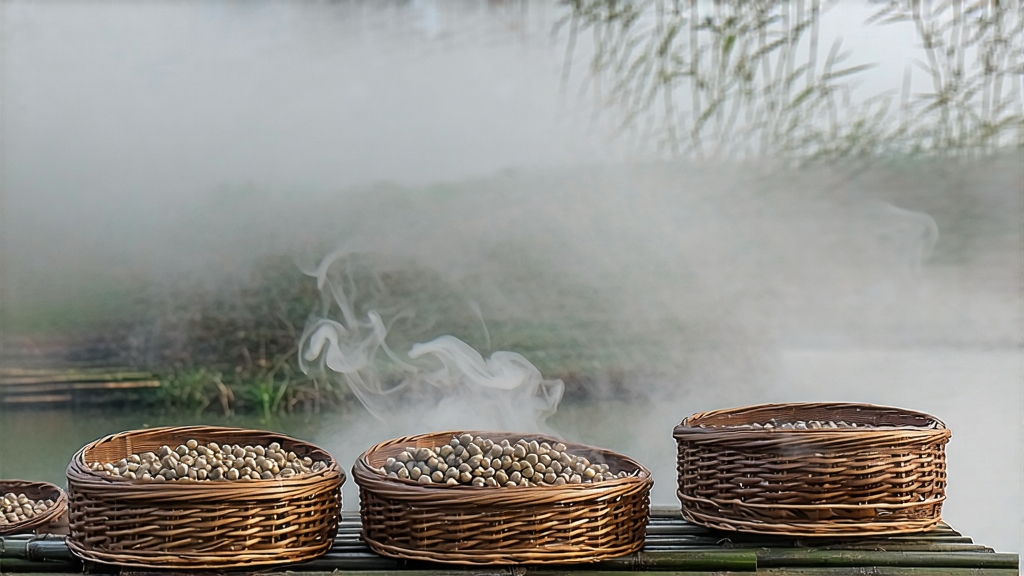
Among the six major families of Chinese tea, white tea is the most understated, yet within this quiet lineage one cultivar shines like moonlight on porcelain—Silver Needle, or Bai Hao Yin Zhen. Revered since the Song dynasty, celebrated by poets and emperors, it is plucked only in the fleeting early-spring window when the tea bush awakens and the air still carries winter’s chill. Its story begins in the coastal mountains of northeast Fujian, where granite peaks, red-yellow soils, and a maritime mist create a natural greenhouse that slows leaf development and concentrates amino acids. Locals claim the same sea fog that once protected Ming-dynasty fishing fleets now veils the tea gardens, allowing the buds to mature in gentle luminosity.
Silver Needle is not a generic style but a protected name tied to specific terroirs: Fuding, Zhenghe, and Jianyang. Each micro-zone imparts a signature: Fuding versions are famously floral, with a cool sugar-cane finish; Zhenghe needles lean toward thicker body and ripe melon notes; Jianyang, the smallest appellation, offers a whisper of alpine herb. Within these zones two main bush varieties dominate—Fuding Da Bai (“Big White”) and Zhenghe Da Bai. The former produces plumper buds whose silver down catches light like frost, while the latter yields slimmer, more resinous tips that tolerate longer withering without bruise. Choice of cultivar, coupled with minute differences in humidity and soil acidity, explains why Silver Needle from neighboring villages can taste as distant as cousins raised on separate continents.
The craft behind Silver Needle is disarmingly simple on paper yet unforgiving in practice. Picking begins when the morning dew still clings, but only on days when the forecast promises gentle sun and a steady breeze. Two leaves and a bud? Not here. Strict law allows only the unopened spear, plucked with a twist of the wrist so the tiny cucumber-like stem snaps clean. Experienced pickers fill a bamboo basket in two hours, but that bounty shrinks to a mere handful after the inevitable moisture loss. Once back at the cottage, the buds are spread one layer deep on reed trays and left to wither, untouched, for thirty-six to forty-eight hours. No pan-firing, no rolling, no shaking—just air, time, and the watchful eye of a master who senses when the bud’s internal moisture has fallen to eight percent. On the second night, if the mountain wind drops, charcoal embers may be lit in a pit beneath the elevated trays, supplying a subtle warmth that coaxes the final phase of drying without baking. The goal is to arrest oxidation at roughly five to ten percent, preserving the enzymes that will continue to mellow the tea for decades.
Western drinkers often ask why Silver Needle costs more than many green teas when it undergoes so little manipulation. The answer lies in yield: ten thousand buds—each picked by hand—make barely one pound of finished tea. A single tea bush, pruned to waist height, offers perhaps forty viable tips per spring. Do the arithmetic and you realize an entire row of bushes is required for one pot. Add the risk of untimely rain that can force pickers to stay home, or a sudden heat spike that can over-oxidize the crop, and the price becomes a reflection of agricultural roulette.
To unlock the needle’s quiet symphony, water is more important than ware. Begin with low-mineral spring water heated to 80 °C; anything harder accentuates astringency, while boiling water shocks the bud, releasing bitter quinine-like alkaloids. A tall glass or a thin-walled gaiwan allows you to watch the performance: the buds stand upright like tiny glass sculptures, then slowly sink, releasing microscopic hairs that shimmer like silver dust. First infusion—thirty seconds—yields a liquor the color of early morning sunshine on straw, aroma of fresh lilies cooled by rain. Sip with the front of the tongue; you should taste a fleeting sweetness reminiscent of stevia leaf, followed by a cucumber-crisp finish that leaves the palate cool and hydrated. Second infusion, forty-five seconds, brings out almond milk and a hint of pine pollen. By the third, a subtle umami emerges, akin to the water left after poaching daikon. Seasoned drinkers pursue a fourth or fifth steeping, extending time by fifteen-second increments, discovering later infusions that echo wild honey and wet slate.
Professional cupping follows a stricter choreography: three grams of tea, 150 milliliters of water, five minutes of silent extraction. The resulting liquor is evaluated for clarity, color, and